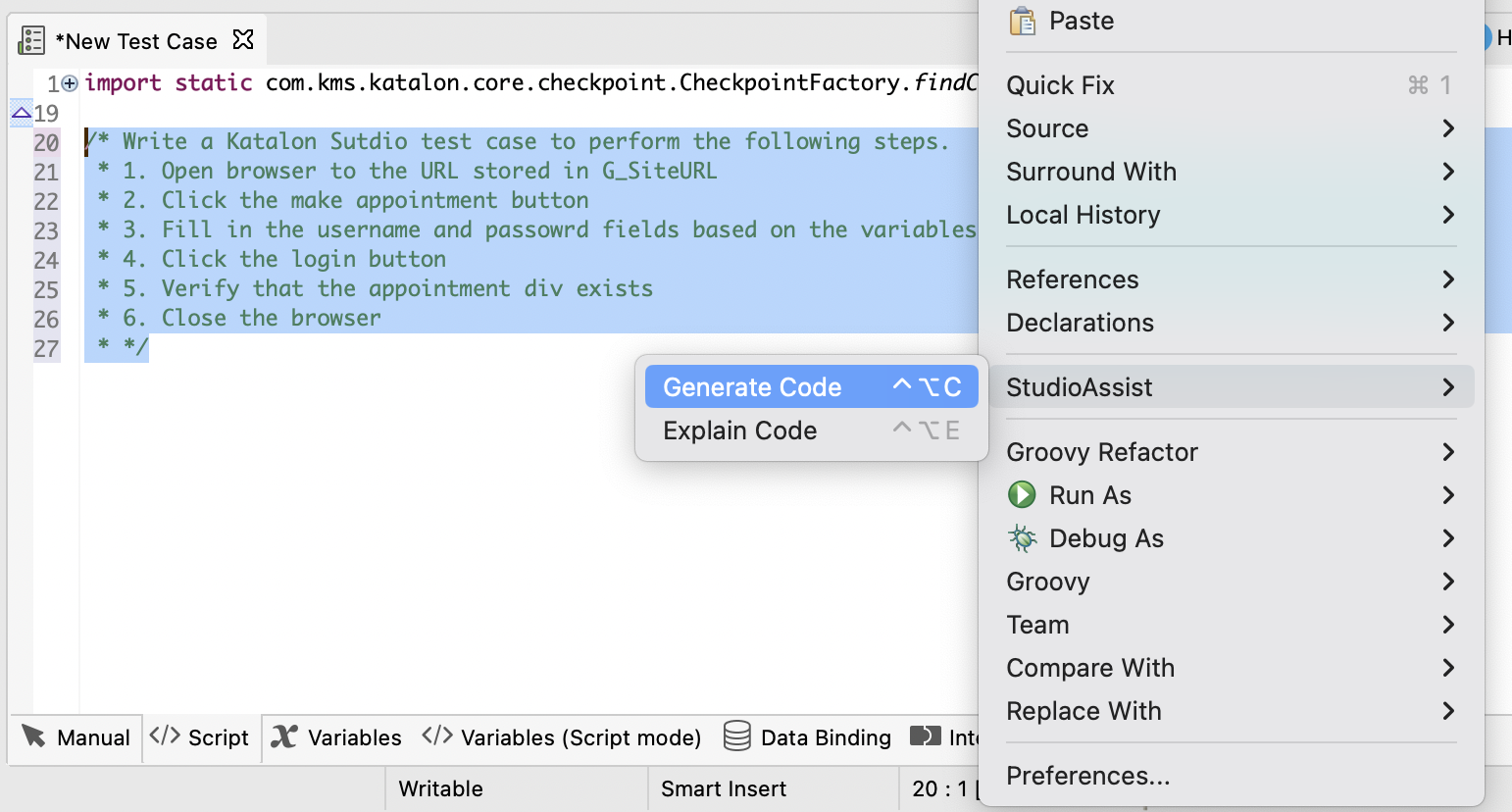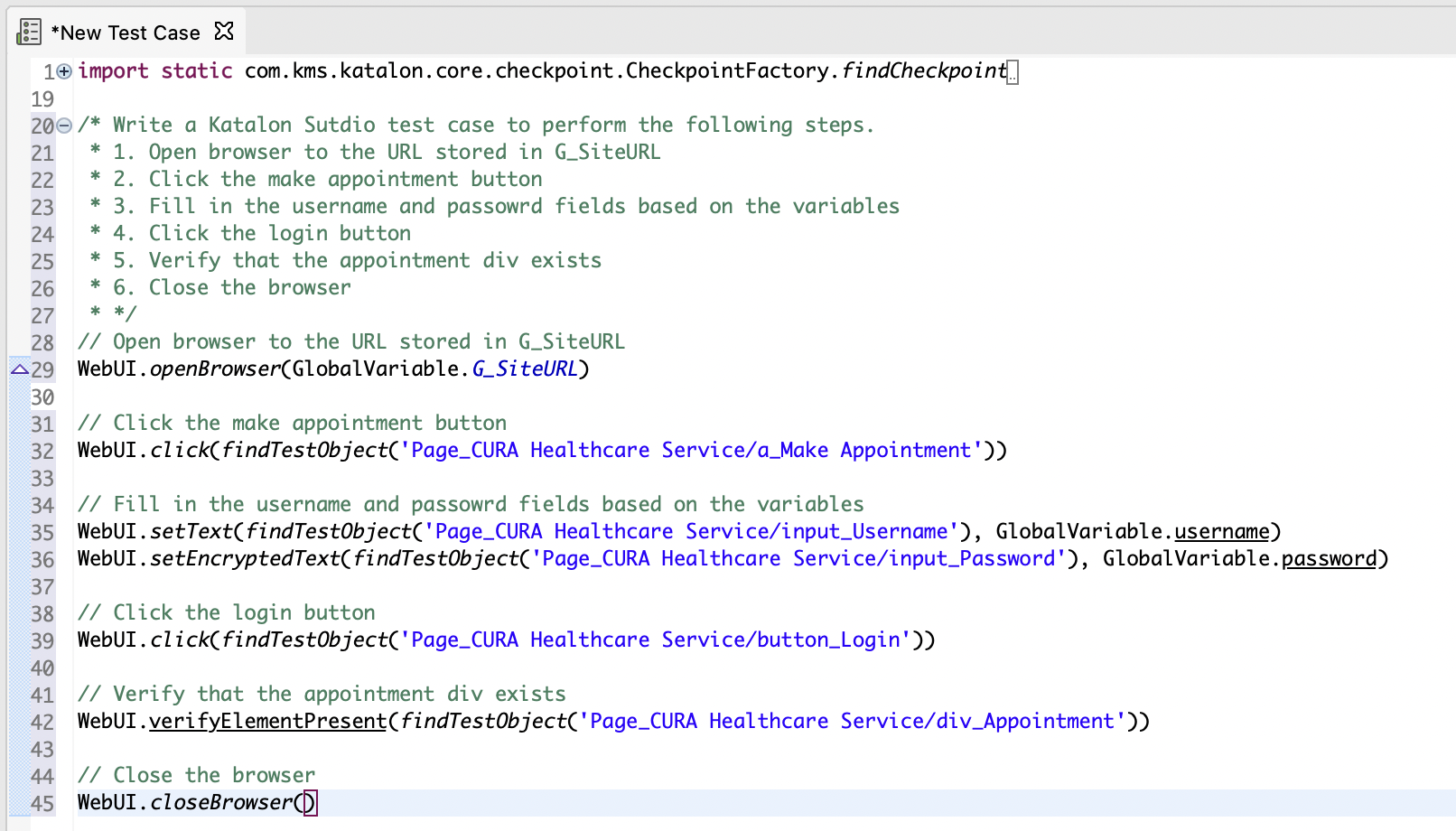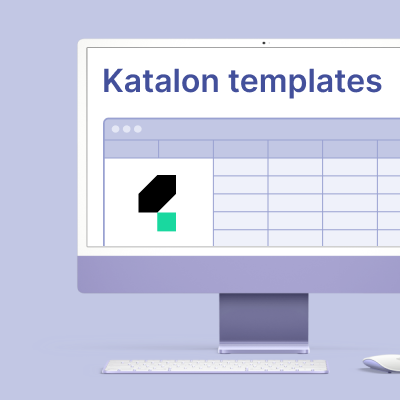What Is AI Testing? Complete Guide, Use Cases & Examples
Learn with AI
AI testing is the process of evaluating the functionality, performance, and reliability of a system with the help of AI. The goal of AI testing is to significantly improve the efficiency of traditional software testing thanks to AI's exceptional generative powers.
AI testing vs Traditional Software Testing
AI testing is essentially an AI-powered upgrade for traditional software testing. All stages of traditional software testing can benefit by an integration of AI into the process.
Traditionally, software testing follows the Software Testing Life Cycle, which consists of 6 major stages:

AI testing follows the same life cycle. Now that there is AI involved, testers can achieve better results faster. Here are some ideas of how you can incorporate AI into the traditional STLC to turn it into an AI-powered STLC:
- Requirement Analysis: AI analyzes the stakeholder requirements and propose a detailed test strategy
- Test Planning: AI devises a test plan based on the strategy, tailoring it to your organization's needs (such as prioritizing high-risk test cases and areas).
- Test Case Development: AI generates, adapts, and self-heals test scripts. It can also provides synthetic test data.
- Test Cycle Closure: AI analyzes defects, predicts trends, and automates reporting.=
Use Case of AI For Testing
According to the State of Software Quality Report 2024:
- AI is most commonly applied for test case generation, both in manual testing (50% respondents agreed) and automation testing (37%).
- Test data generation follows closely, with 36%.
- Test optimization and prioritization is another noted use case, at 27%.

1. AI-powered Test Creation
The first use case of AI for testing is test case generation. Here is an example of StudioAssist in Katalon Studio. Testers can use the Generate Code feature to turn set of test steps written in human language into a code snippet: Once generated, this test case can be easily edited and customized, then executed across a wide range of environments. Here is the end result:
Once generated, this test case can be easily edited and customized, then executed across a wide range of environments. Here is the end result:
2. Automated Test Data Generation
In scenarios where the use of real-world data is not possible due to compliance and regulations, AI-powered synthetic test data generation is especially helpful. It is easy to customize the characteristics of the AI to fit your highly specific testing needs.
For example, here we use Katalon AI to generate a set of synthetic data for testing purpose, then store the results inside an Excel file using Apache ROI:

Read More: Synthetic Test Data Generation With Katalon
3. AI-powered Test Maintenance
For web testing and especially UI testing, test maintenance is a real struggle all testers. UIs change constantly, and hard-coded test cases break easily.
Technically speaking, test scripts identify and interact with web elements (buttons, links, images, etc.) through "locators", a unique ID for each element. When these locators change due to code update, the test scripts no longer recognize the element, leading to a broken test.
With the help of AI, this issue can be fixed. When a test is broken, AI can fetch a new locator to replace the broken ones to continue running the tests. This reduces the tester's maintenance workload.
Benefits of AI Testing
- Faster test execution
- Reduced manual effort
- Improved test coverage
- Self-healing automation
- Early defect detection
- Smarter test case generation
- Enhanced accuracy and reliability
- Predictive defect analytics
- Cost savings in long-term testing
- Continuous testing in CI/CD pipelines


Challenges of AI Testing
- High dependency on quality data
- Difficulty in explaining AI-driven decisions
- Not a full replacement for human testers
- Initial setup and training complexity
- Risk of biased AI models
- Requires continuous learning and updates
Is AI Going To Replace Testers?
The age-old question: will AI testing replace traditional software testers?
AI is indeed disruptive, and similar to many disruptive inventions in the past, it always create a sense of uncertainty and skepticism among its adopters.
AI technology is only in its infancy, but at the current rate this tech is growing, it is undeniable that it will affect the lives of so many people, including software testers.
What testers need to do is adapt instead of panic.
A good way to think about it is to remember what AI can and can't do:
What AI Can Do:
- Automate regression, functional, and load testing.
- Identify patterns, anomalies, and defects faster than humans.
- Optimize test case selection and execution based on risk analysis.
- Self-heal test scripts to reduce maintenance effort.
What AI Can’t Do:
- Perform exploratory and usability testing, which require human intuition.
- Assess user experience, accessibility, and emotional responses.
- Make ethical decisions when evaluating bias and fairness in software.
- Understand business logic, edge cases, and subjective requirements beyond historical data.
In fact, in the age of AI, human ingenuity and creativity is more needed than ever. What testers need to do is:
- Learn AI-powered testing tools and frameworks.
- Shift towards test strategy, analysis, and automation oversight.
- Develop skills in AI ethics, interpretability, and human-AI collaboration.
- Adapt to a hybrid model, where AI handles repetitive tasks, and humans focus on critical thinking and decision-making.
Best Practices For AI Testing
- Monitor AI Model Behavior – Continuously track performance to detect drift or unexpected changes.
- Test for Bias & Fairness – Identify and eliminate biases in AI models to ensure ethical outcomes.
- Perform Robustness Testing – Validate AI’s ability to handle edge cases and adversarial inputs.
- Ensure Explainability – Use techniques to make AI decisions transparent and interpretable.
- Continuously Improve – Update tests as AI models evolve, ensuring long-term accuracy and reliability.
Testing For AI Systems
The "AI testing" term can also be understood as testing for AI-based systems, or “testing for AI”. To process a tremendous amount of data to recognize patterns and make intelligent decisions, these AI systems incorporate many AI techniques, including:
- Machine learning
- Natural language processing (NLP)
- Computer vision
- Deep learning
- Expert systems
AI-Powered Tools for AI Testing
The following software testing tools pioneer the AI testing trend and incorporate AI technologies into their systems to bring software testing to the next level. More than simply a tool to create and automate testing, they also perform intelligent tasks that in the past would have required a human tester.
1. Katalon Studio

Katalon Studio is a comprehensive quality management platform that supports test creation, management, execution, maintenance, and reporting for web, API, and mobile applications across a wide variety of environments, all in one place, with minimal engineering and programming skill requirements.
For AI testing specifically, here are the key features you can have:
- StudioAssist: Leverages ChatGPT to autonomously generate test scripts from a plain language input and quickly explains test scripts for all stakeholders to understand.
- Katalon GPT-powered manual test case generator: Integrates with JIRA, reads the ticket’s description, extracts relevant information about software testing requirements, and outputs a set of comprehensive manual test cases tailored to the described test scenario.
- SmartWait: Automatically waits until all necessary elements are present on screen before continuing with the test.
- Self-healing: Automatically fixes broken element locators and uses those new locators in following test runs, reducing maintenance overhead.
- Visual testing: Indicates if a screenshot will be taken during test execution, then assesses the outcomes using Katalon TestOps. AI is used to identify significant alterations in UI layout and text content, minimizing false positive results and focusing on meaningful changes for human users.
- Test failure analysis: Automatically classifies failed test cases based on the underlying cause and suggests appropriate actions.
- Test flakiness: Understands the pattern of status changes from a test execution history and calculates the test's flakiness.
- Image locator for web and mobile app tests: Finds UI elements based on their visual appearance instead of relying on object attributes.
- Web service anomalies detection (TestOps): Identifies APIs with abnormal performance.
As one of the pioneers in the AI testing world, Katalon continues to add more exciting AI-powered features to their product portfolio, empowering QA teams around the world to test with unparalleled accuracy and efficiency.
2. TestCraft

TestCraft simplifies regression testing and web monitoring using AI and Selenium, reducing maintenance time and costs.
Key Features:
- No coding required – Drag-and-drop interface for easy test creation.
- Cross-browser testing – Run tests on multiple environments simultaneously.
- On-the-Fly mode – Automatically generates test models for easy reuse.
- AI-powered element detection – Identifies web elements even with UI changes.
- Adaptive testing – Adjusts to dynamic changes, minimizing test breakages.
3. Applitools

Applitools is a software that manages visual applications and employs visual AI for AI-powered visual UI testing and monitoring. The incorporated AI and machine learning algorithms are fully adaptive, enabling it to scan and analyze app screens like the human eye and brain, but with the capabilities of a machine.
Key features:
- It effectively identifies visual bugs in apps, ensuring that no visual elements overlap, remain invisible, go off-page, or introduce unexpected features. Traditional functional tests fall short in achieving these objectives.
- Applitools Eyes accurately detects material differences and distinguishes between relevant and irrelevant ones.
- Automation suites sync with rapid application changes.
- Cross-browser testing is supported, but with limited AI features.
4. Testim Automate

Testim Automate uses machine learning to speed up test creation and reduce test maintenance.
- Easy Test Creation – Non-coders can create end-to-end tests with its recording feature, while engineers can extend tests using code.
- Smart Locators for Maintenance – AI assigns weights to multiple attributes of each element, ensuring tests remain stable even when elements change.
- Fewer Test Failures – No need for complex queries—Testim adapts automatically to UI changes, minimizing test breakage.
FAQs on AI Testing
1. What is AI Testing?
AI Testing is a modern testing approach that leverages artificial intelligence (AI) and machine learning (ML) technologies to automate and optimize software quality assurance.
It enhances traditional testing by generating test cases, predicting high-risk areas, creating synthetic test data, and self-healing broken test scripts to boost efficiency across the entire Software Testing Life Cycle (STLC)
2. What challenges are involved in AI testing?
-
Traditional testing follows manual or scripted processes through STLC stages like planning, development, and execution.
-
AI Testing uses AI to automate parts of these stages: requirement analysis, test planning, case generation, execution, and maintenance, significantly reducing manual effort and error rates
3. How can AI support continuous testing?
AI brings value to various testing processes:
-
Smart Test Case Generation – generate or adapt test cases with prompts or model-based generation.
-
Test Case Recommendations – ML models suggest high-risk areas based on historical QA data.
-
Test Data Generation – Create synthetic but realistic data for complex scenarios.
-
Self-Healing Tests – Automatically fix broken test scripts after UI or code changes.
-
Visual Testing – Compare UI screens using AI to ignore minor pixel changes seen by humans as non-issues
4. Why should organizations adopt AI Testing?
-
Efficiency & Speed – Faster test creation and execution cycles.
-
Accuracy – Reduces human error in repetitive and detailed tasks.
-
Scalability – Easily covers large or complex test scenarios.
-
Maintenance-friendly – Self-healing features make tests more robust over time
5. What are the limitations or challenges of AI Testing?
-
It requires human review—AI-generated test cases may contain inaccuracies or misinterpret logic.
-
AI features often rely on quality historical data to learn effectively.
-
Complex or edge-case logic may still need manual attention in test planning.
-
Cost of adoption—some platforms may involve licensing, data cleanup, and team training
6. What should I watch for when implementing AI Testing?
-
Always review and validate AI-generated tests; never deploy blindly.
-
Start with repetitive, high-volume tasks like regression or web-based user flows.
-
Ensure your AI has access to clear requirements and context, especially for generating accurate test data.
-
Monitor self-healing behavior to avoid false positives or unintended side effects.
|

